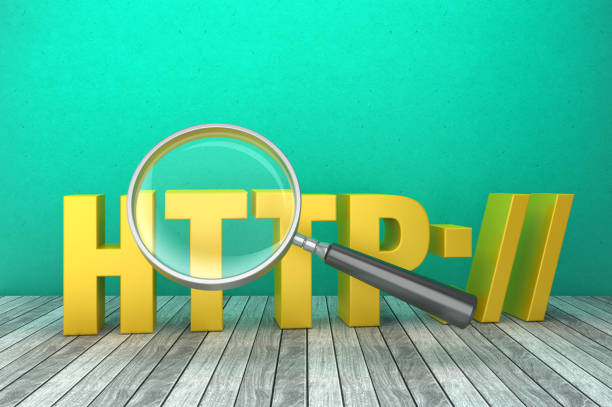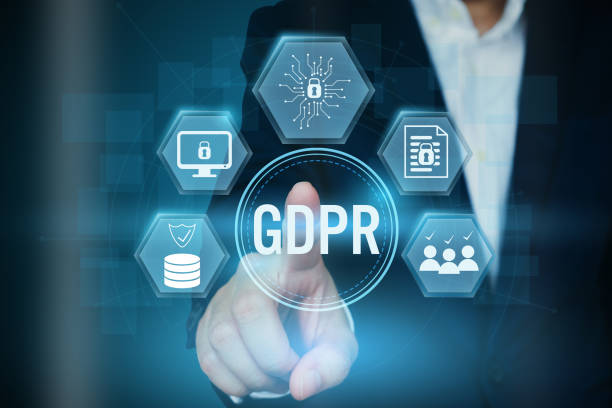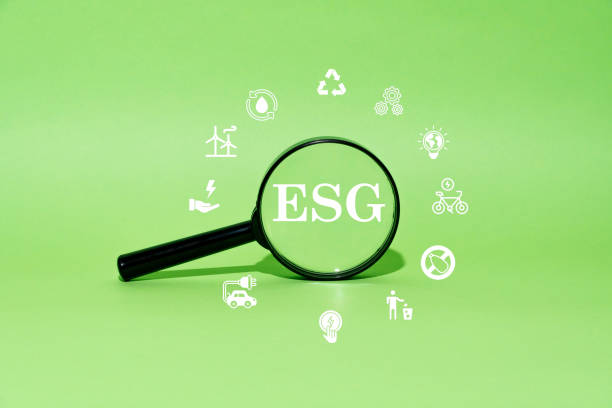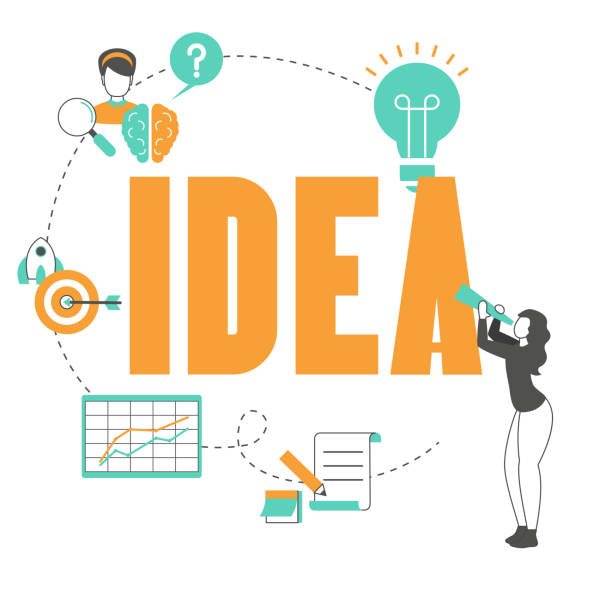What is On-Page SEO? Definition, Importance, and Basics

On-Page SEO is a collection of techniques and actions you take within your website to improve your site’s ranking in Google search results and other search engines.
Search engine optimization.
These actions include optimizing content, keywords, title tags, meta descriptions, URL structure, and more.
#On_Page_SEO is very important because it helps search engines better understand the content of your page and show it to relevant users.
Without strong on-page SEO, even the best content can get lost in search results.
The importance of On-Page SEO is due to the following reasons:
- Improve site ranking in search results: By optimizing on-page SEO, you can improve your site’s ranking in search results and attract more traffic to your site.
- Increase targeted traffic: On-page SEO helps you attract more targeted traffic to your site, meaning users who are looking for information and products that you offer.
- Improve user experience: On-page SEO also includes optimizing the user experience of the site, such as page loading speed, responsive design, and site structure.
To get started with On-Page SEO, you need to be familiar with its basic concepts.
These concepts include keywords, title tags, meta descriptions, URL structure, internal and external linking, and page loading speed.
By understanding these concepts, you can design and implement your on-page SEO strategy.
Does your current website convert visitors into customers or drive them away? Solve this problem forever with professional company website design by Rasaweb!
✅ Create powerful credibility and branding
✅ Attract target customers and increase sales
⚡ Get a free consultation now!
Keyword Research, the Beating Heart of On-Page SEO

Keyword research is one of the most important steps in on-page SEO.
Keywords are phrases that users search for in search engines to find the information they need.
By identifying the right keywords and using them in your content, you can optimize your site for relevant searches and attract more traffic to your site.
To perform keyword research, you can use various tools such as Ahrefs, Moz Keyword Explorer, and Ubersuggest.
These tools help you identify keywords related to your topic, check their search volume, and assess the level of competition for each keyword.
After identifying keywords, you should use them naturally in your content.
The best way to use keywords is to write quality and valuable content for users.
Try to use keywords naturally in the page title, meta description, headings, and body text.
Avoid using too many keywords, as this can result in your site being penalized by search engines.
Using keywords correctly is one of the main principles of on-page SEO.
Content Optimization, the Key to Success in On-Page SEO

Content optimization is one of the most important factors for success in on-page SEO.
Quality and valuable content not only attracts users but also impresses search engines.
Content marketing To optimize content, you should pay attention to the following points:
- Create quality and valuable content: Your content should provide users with useful information and answer their questions.
Try to keep your content up to date and add new and relevant information to it. - Use appropriate keywords: Use keywords naturally in your content, but avoid using too many of them.
- Optimize title and meta descriptions: The title and meta descriptions should be attractive and relevant to the page’s content.
Use keywords in the title and meta descriptions to increase the chance of your page being seen in search results. - Use images and videos: Images and videos can make your content more attractive and engaging.
Use images and videos related to your topic and optimize them.
Content optimization is one of the most important steps in on-page SEO.
By creating quality and valuable content and optimizing it, you can improve your site’s ranking in search results and attract more traffic to your site.
This helps your SEO.
| Element | Description | Best Practice |
|---|---|---|
| Page Title | The main title of the page that is displayed in search results. | Include the main keyword, be attractive, and be a maximum of 60 characters. |
| Meta Description | A summary of the page’s content that is displayed in search results. | Be attractive, descriptive, and a maximum of 160 characters. |
| Headings (H1-H6) | Used to structure content and highlight important points. | Use H1 for the main title of the page and H2-H6 for subheadings. |
| Images | Used to make content more attractive and convey the message better. | Use high-quality images and describe them with alternative text (alt text). |
Optimized URL Structure, a Path to Better On-Page SEO

An optimized URL structure is another important factor in on-page SEO.
The URLs of your pages should be short, descriptive, and include keywords related to the page’s content.
An optimized URL not only helps search engines better understand the content of your page but also helps users understand what to expect on the page.
This is very important in on-page SEO.
The best way to create an optimized URL structure is to use the main keywords in the URL.
For example, if your page is about “On-Page SEO Guide,” your page URL could be: example.com/on-page-seo-guide.
Try to avoid using irrelevant numbers and letters in your URL.
Also, use a hyphen (-) instead of an underscore (_) to separate words in the URL.
An optimized URL structure also helps improve the user experience.
Short and descriptive URLs help users easily find the pages they want and navigate your site.
This increases the amount of time users spend on your site, which is an important factor in site ranking by search engines.
URL optimization is a key aspect of on-page SEO.
Does your current company website present a worthy image of your brand and attract new customers?
If not, turn this challenge into an opportunity with Rasaweb’s professional company website design services.
✅ Significantly improves your brand’s credibility and image.
✅ Paves the way for attracting leads and new customers.
⚡ Contact Rasaweb now for a free and expert consultation!
Internal Linking, a Bridge Between Pages of the Site

Internal linking is one of the most important on-page SEO techniques that helps you improve your site’s structure and increase the ranking of your pages in search results.
Internal linking means creating links between different pages of your site.
These links help search engines better understand your site’s pages and recognize the connection between them.
In addition, internal linking also helps users easily navigate your site and find the information they need. On-page SEO is strengthened in this way.
To perform optimized internal linking, you should pay attention to the following points:
- Linking to relevant pages: Try to link only to pages that are related to the content of the current page.
- Using appropriate link text: The link text should be descriptive and relevant to the content of the destination page.
- Avoiding overuse of links: Avoid using too many links on one page.
Internal linking is one of the most important factors in on-page SEO.
By performing optimized internal linking, you can improve the ranking of your pages in search results and attract more traffic to your site.
Don’t forget that on-page SEO is not only limited to keywords and content but also depends on the structure and connection between your site’s pages.
Image Optimization, an Opportunity for Better On-Page SEO

Image optimization is an important aspect of on-page SEO that is often overlooked.
Images can make your content more attractive and engaging, but if they are not optimized properly, they can negatively impact page loading speed and your site’s ranking.
To optimize images, you should pay attention to the following points:
- Choosing the right format: Use JPEG, PNG, and GIF formats for your images.
The JPEG format is suitable for images with many colors, the PNG format is suitable for images with graphics and text, and the GIF format is suitable for animated images. - Reducing image size: Reduce the size of images without reducing their quality.
You can use online tools such as TinyPNG and ImageOptim to reduce the size of your images. - Using alternative text (alt text): Add a descriptive alternative text for each image.
Alternative text helps search engines understand the content of the image and is displayed to users if the image does not load.
Image optimization is a key aspect of on-page SEO that can help improve page loading speed and your site’s ranking.
By optimizing your images, you can improve your site’s user experience and attract more traffic to your site.
On-page SEO also pays attention to these small details.
Page Loading Speed, a Critical Factor in On-Page SEO

Page loading speed is one of the most important factors in on-page SEO that directly affects the user experience and your site’s ranking in search results.
Users expect web pages to load quickly, and if your page is slow, users may leave your site and visit another site.
Search engines also consider page loading speed as a ranking factor, and sites that load faster achieve a better ranking in search results.
To improve page loading speed, you can take the following actions:
- Optimize images: Reduce the size of images and use appropriate formats.
- Enable compression: Use Gzip compression to reduce the size of HTML, CSS, and JavaScript files.
- Use a CDN: Use a content delivery network (CDN) to distribute your site’s content across different servers.
- Optimize code: Optimize your HTML, CSS, and JavaScript code and remove unnecessary code.
Improving page loading speed is one of the most important steps in on-page SEO that can have a positive impact on the user experience and your site’s ranking in search results.
On-page SEO means paying attention to all technical and content aspects of the site.
| Optimization Method | Description | Suggested Tools |
|---|---|---|
| Image Compression | Reducing the size of image files for faster loading speed. | TinyPNG, ImageOptim |
| Enable Browser Caching | Storing static resources in the user’s browser for faster page loading on subsequent visits. | Adding caching rules to the .htaccess file |
| Optimize CSS and JavaScript Code | Removing spaces, comments, and minifying code. | UglifyJS, CSSNano |
| Using a CDN | Using a content distribution network to deliver content from the nearest server to the user. | Cloudflare, MaxCDN |
Responsive Design, a Necessity for On-Page SEO and User Experience

Responsive design is a necessity for on-page SEO and user experience.
Given the increasing use of mobile devices to browse the web, your site must be displayed correctly on these devices.
Responsive design means that your site automatically adapts to the user’s device screen size and allows users to easily navigate your site.
Search engines also consider responsive design as a ranking factor, and sites that have a responsive design achieve a better ranking in search results.
To ensure that your site has a responsive design, you can use Google’s Mobile-Friendly Test tool.
Responsive design is not only important for on-page SEO but also necessary for improving the user experience.
Users expect your site to be displayed correctly on mobile devices, and if your site does not have a responsive design, users may leave your site and visit another site.
On-page SEO must also pay attention to the user experience.
Tired of your online store not generating as much revenue as it could? Rasaweb, specializing in professional online store design, solves this problem forever!
✅ Increased sales rate and revenue
✅ High loading speed and exceptional user experience
⚡ Get a free online store design consultation
Optimizing Title Tags and Meta Descriptions, the First Step to Attracting an Audience

Title Tags and Meta Descriptions are the first things users see in search results.
These tags and descriptions should be attractive and relevant to the page’s content to encourage users to click on your site’s link.
Optimizing title tags and meta descriptions is one of the most important steps in on-page SEO that can have a significant impact on your site’s click-through rate (CTR).
To optimize title tags and meta descriptions, you should pay attention to the following points:
- Use main keywords: Use your main keywords in title tags and meta descriptions.
- Being attractive and descriptive: Title tags and meta descriptions should be attractive and descriptive and tell users what to expect on the page.
- Length limitation: The length of title tags should be less than 60 characters and the length of meta descriptions should be less than 160 characters.
Optimizing title tags and meta descriptions is one of the most important steps in on-page SEO that can have a significant impact on your site’s click-through rate.
On-page SEO pays attention to these details as well.
The Role of Schema Markup in Advanced On-Page SEO

Schema Markup is code that allows you to provide more information about the content of your page to search engines.
By using Schema Markup, you can tell search engines what your page is about, what type of content it has (such as an article, product, event, etc.), and other information about it.
This information helps search engines better understand the content of your page and show it to relevant users.
Using Schema Markup can have a significant impact on your site’s ranking in search results.
Sites that use Schema Markup often achieve a better ranking in search results and have a higher click-through rate.
To use Schema Markup, you can use the Schema Markup Generator tool.
Schema Markup is one of the advanced on-page SEO techniques that can help improve your site’s ranking in search results.
On-page SEO goes beyond keyword and content optimization and includes the use of advanced techniques such as Schema Markup.
On-page SEO is an ongoing process and requires effort and follow-up.
Frequently Asked Questions
| Number | Question | Answer |
|---|---|---|
| 1 | What is On-Page SEO? | On-Page SEO refers to a set of actions performed within a website and to optimize its pages in order to gain a better ranking in search results. |
| 2 | What is the most important factor in On-Page SEO? | Quality, relevant, and comprehensive content that meets the user’s needs is the most important factor in On-Page SEO. |
| 3 | What role does the Title Tag play in On-Page SEO? | The title tag is one of the most important factors that tells search engines and users what the page’s content is about. It must include the main keyword and be attractive. |
| 4 | How important is the Meta Description tag? | Although it does not directly affect ranking, it is very effective on the click-through rate (CTR) in search results and encourages users to visit the page. |
| 5 | How is image optimization done in On-Page SEO? | By using the appropriate alt tag, compressing the image size to increase loading speed, and naming the image file meaningfully. |
| 6 | What is the importance of using headings (H1, H2, H3) in On-Page SEO? | Headings help structure content, increase readability, and help search engines understand the hierarchy and subtopics of the content. |
| 7 | What does internal linking mean and what are its benefits? | Internal linking means creating links between different pages of a website. This helps to distribute authority, improve user navigation, and assist search engine crawling. |
| 8 | Where should the main keyword (Focus Keyword) be placed on the page? | The main keyword should be in the title tag, meta description, H1, first paragraph, and naturally throughout the text, and if possible in the URL address. |
| 9 | What is the impact of copied or duplicate content on On-Page SEO? | Duplicate content can harm the site’s ranking and confuse search engines as to which version is original and may identify it as spam. |
| 10 | How important is page loading speed in On-Page SEO? | Page loading speed is an important ranking factor and directly affects the user experience. Slow pages increase the bounce rate of users. |
And other services of Rasa Web advertising agency in the field of advertising
Smart Google Ads: A professional solution for improving SEO ranking with a focus on marketing automation.
Smart Brand Identity: An effective tool for analyzing customer behavior with the help of accurate audience targeting.
Smart Direct Marketing: Designed for businesses looking for digital branding through SEO-focused content strategy.
Smart Customer Journey Map: A professional solution for increasing site visits with a focus on SEO-focused content strategy.
Smart Website Development: A combination of creativity and technology to manage campaigns by SEO-focused content strategy.
And more than hundreds of other services in the field of internet advertising, advertising consulting, and organizational solutions
Internet Advertising | Advertising Strategy | Advertorial Report
Resources
What is On-Page SEO? Comprehensive On-Page SEO Guide
,What is On-Page SEO? Comprehensive Guide + Tips and Techniques
,On-Page SEO Training (On-Page SEO) – 20 Important and Practical Tips
,What is On-Page SEO and How to Optimize Your Website with It?
? To make your business shine in the digital world, Rasaweb Aferin is by your side with its comprehensive services including corporate website design, SEO and online marketing.
📍 Tehran, Mirdamad Street, next to the Central Bank, South Kazerun Alley, Ramin Alley No. 6



